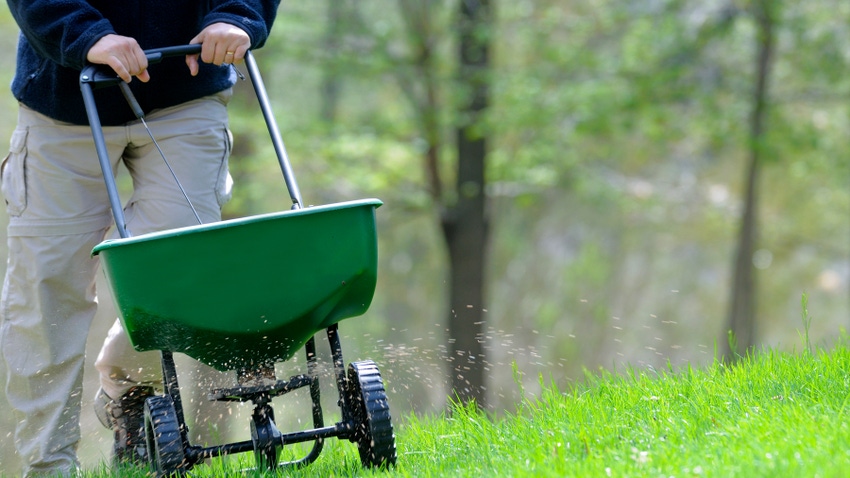January 30, 2023

by John Fech
When is the best time to fertilize my bluegrass lawn around our farm home this spring? There are two general time frames for spring lawn fertilization — late April and early June.
However, digging a little deeper, there are several other influential factors that affect timing, including the age of the soil and lawn — newer lawns (30 years old or less) need more fertilizer than older lawns. Newer lawns often struggle because of soil that is low in nutritional value and has high weed pressure.
They are usually best managed by making a fertilizer-plus-preemergence herbicide application in late April to early May — in eastern Nebraska — followed by a second application in early June. A mix of slow and quick release nitrogen fertilizer is recommended.
Older lawns usually need lesser amounts of fertilizer to perform well and have lower weed pressure. Because of the tilth of older soils and the microbial breakdown of soil organic matter, fertilizing these lawns in late May to early June is usually sufficient. Again, a slow-quick fertilizer combination is appropriate. Include a preemergence herbicide on older lawns that have a history of summer annual weed infestation.
The dates for central and western Nebraska, for instance, should be adjusted accordingly. Based on when initial green-up occurs, making an application a week to two weeks later than eastern Nebraska would be appropriate.
Application of fertilizer in the fall will lessen the need for applications in the spring. If no fertilizer was applied in fall 2022, a light application in midspring followed by a half to three-quarters rate in early summer would help make up the shortfall.
One early fall application with 30% to 50% quick release/water soluble nitrogen will provide even release throughout fall and help maintain adequate density, color and pest resistance.
Grower expectations
Some property owners really want a dark green, thick and highly vigorous turf. Others just want something green, and still others something in between. The expectation for the quality of the lawn greatly affects how much and how often you should fertilize.
Most lawn fertilizer products are formulated to deliver 0.9 to 1.0 pounds of actual nitrogen per 1,000 square feet if applied at the label rate. In many situations, applying a lower rate is appropriate. For example, in midfall, on new lawns or areas that are very thin or have suffered pest damage, a quarter rate of soluble nitrogen will supply the needed nutrients without wasting what cannot be absorbed or the risk of causing nitrate pollution.
Fortunately, adjusting the fertilizer rate is easily done by simply moving the fertilizer dial from the recommended setting to one-fourth to one-half of the rate.
Fech is a Nebraska Extension educator based in Omaha.
You May Also Like




